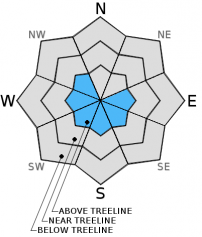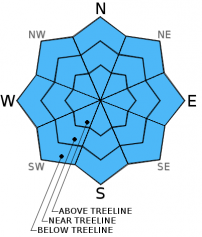| Tuesday | Tuesday Night | Wednesday | |
|---|---|---|---|
| Weather: | Sunny | Clear | Sunny with high clouds increasing late in the day |
| Temperatures: | 37-42 deg. F. | 25-30 deg. F. | 50-55 deg. F. |
| Mid Slope Winds: | Northeast | Northeast | East shifting to the north in the afternoon |
| Wind Speed: | 20-35 mph with gusts to 50 mph | 20-35 mph with gusts to 50 mph | 20-30 mph with gsuts to 45 mph decreasing to 10-15 mph with gusts to 25 mph in the afternoon |
| Expected snowfall: | 0 | 0 | 0 |
| Tuesday | Tuesday Night | Wednesday | |
|---|---|---|---|
| Weather: | Sunny | Clear | Sunny with high clouds increasing late in the day |
| Temperatures: | 33-39 deg. F. | 22-29 deg. F. | 45-50 deg. F. |
| Ridge Top Winds: | Northeast | Northeast | Northeast shifting to the north in the afternoon |
| Wind Speed: | 40-45 mph with gusts to 70 mph increasing to 50-55 mph with gusts to 85 mph in the afternoon | 50-60 mph with gusts to 85 mph | 40-45 mph with gusts to 65 mph decreasing to 20-25 mph with gusts to 40 mph in the afternoon |
| Expected snowfall: | 0 | 0 | 0 |



























